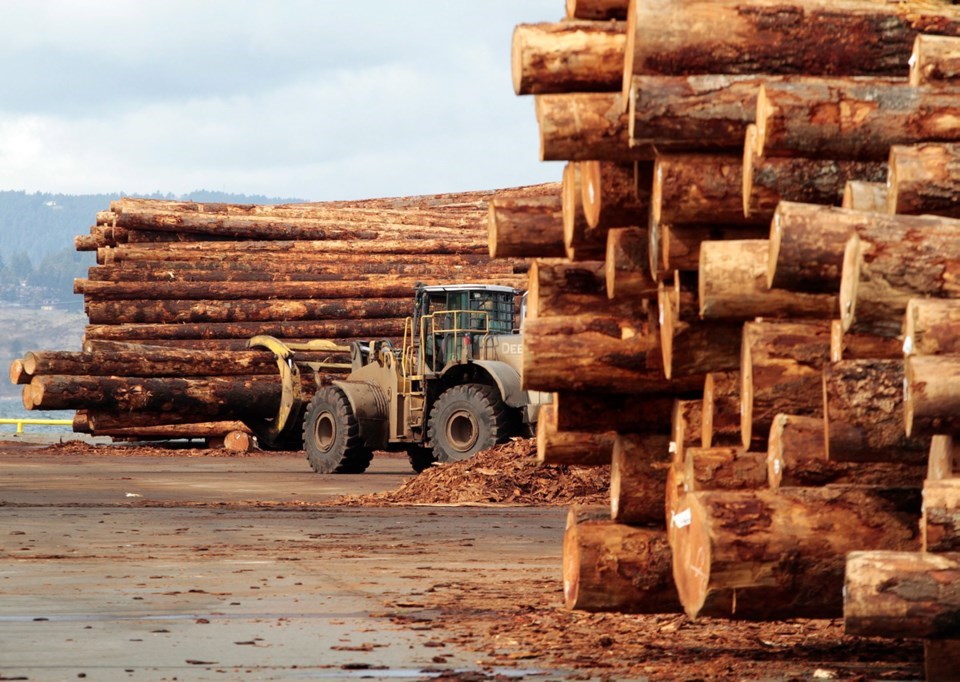Underlying the John Horgan government’s sweeping forestry reforms are some laudable goals: saving stands of at-risk old growth, taking steps toward First Nation reconciliation, protecting caribou and addressing a long-term decline in B.C.’s timber supply.
But these reforms by the provincial NDP government will cost B.C. between 4,500 and 12,000 jobs – depending on whose estimates you believe – and accelerate a flight of capital that has already seen B.C.’s forestry majors buying up sawmills in the U.S., Europe and Eastern Canada, while shuttering sawmills and pulp mills in B.C.
“We need certainty,” says Canfor CEO Don Kayne. “And if we don’t have that in British Columbia, we’re not investing.”
In a recent brief, RBC Capital Markets analyst Paul Quinn speculated that “sawmills will pull back on local investment given the uncertain future of forestry in B.C. The province has already moved from a low-cost producer to [by far] the highest cost region in North America over the past decade.”
“And we expect that trend will remain in the near term as mills continue to chase fewer and fewer logs.”
A growing chorus of voices – from forestry companies and chambers of commerce to union leaders and First Nations – is warning about the pace and scale of the changes and lack of consultation.
Some First Nations – among intended beneficiaries of tenure reform – say the changes are being rushed and that they have not been given the time or resources to properly respond to what’s proposed.
In addition to its recent announcement of plans to remove up to 2.6 million hectares of old growth from the timber harvesting land base, the Horgan government used closure to shut down debate on two bills that could dramatically redraw the forestry landscape for B.C.’s forestry sector, which produces B.C.’s most valuable exports.
“The pace and scale of the policy and legislative changes that have been introduced in the last five weeks has been unprecedented,” said Susan Yurkovich, president of the Council of Forest Industries.
“The government is rushing through legislation with things that will have fundamental impacts on communities, on First Nations, on forestry companies, on workers throughout the province with very little discussion in the House.”
“The province is making sweeping changes to forest legislation without any substantial First Nations input,” the BC First Nations Forestry Council says.
The B.C. government gave First Nations only 30 days to respond to its proposed old-growth deferrals. The Huu-ay-aht on Vancouver Island responded (it disagrees with the deferrals), while others protested the tight deadline.
“We don’t have the resources or expertise needed to understand the implications of these changes on our rights,” the Ashcroft Indian Band told the government.
The United Steelworkers union (USW), which represents 12,000 sawmill workers and loggers in B.C., has also criticized the reform legislation – notably the old-growth deferrals – as hasty and lacking input from labour.
“In the past three years, eight operations with USW workers across B.C. closed and 1,000 good-paying, family-supporting jobs were lost,” said USW Wood Council chairman Jeff Bromley. “The impact from this process will almost certainly multiply across the province.”
While rural communities could be hit hard by reforms that result in sawmill and pulp mill closures, even cities like Surrey could see significant economic impacts.
Large sawmills in Surrey include operations run by Teal-Jones Group, S&R Sawmills, Pacific Lumber, Catalyst Paper, the Sundher Group, Key West Forest Products and Riverside Forest Products.
“The deferral process is going to jeopardize many businesses,” said Surrey Board of Trade president Anita Huberman. “Hundreds of employees will be laid off due to this deferral process.”
In his recent brief, Quinn estimated the removal of 2.6 million hectares of old growth from the timber land base would translate into a 13 per cent decrease in the annual allowable cut.
Old growth makes up a relatively small amount of Teal Jones’ tenure but is disproportionately valuable.
“Those small quantities allow us to go into areas of some of the lower-quality fibre so we can harvest the whole scope of the forest,” said Conrad Browne, director of Indigenous partnerships and strategic relations for Teal Jones.
While old-growth logging deferrals are the most immediate concern, other changes being made – through bills 23 and 28 – will redraw the working forest land base in B.C. and could have a serious impact on forest industries.
Those changes have been rushed through the B.C. legislature without sufficient debate, said BC Liberal forestry critic John Rustad.
“It took me six hours to read this legislation once,” said Dave Elstone, managing director of the Spar Tree Group forestry consulting firm. “How on earth can they have passed this in the legislature that fast? There’s no way you could have sat down and understood this as an MLA. I’m a forester, and I have to sit down and really think about this stuff.”
Bromley said unionized labour has likewise not had sufficient input on all the changes.
The amendments made to the Forest Act include mechanisms for redistributing tenure.
“Changes to legislation will enable the government to reduce harvesting rights of established companies that have built up world-class sawmills and plywood mills over the decades,” warns forest sector consultant Russ Taylor.
Katrine Conroy, Minister of Forests, Lands, Natural Resource Operations and Rural Development, acknowledged that old-growth deferrals could cost 4,500 jobs. But Taylor estimated that “the compounding effect” of old-growth deferrals, tenure redistribution and other reforms could result in the permanent loss of 10 to 12 sawmills, 10,000 to 12,000 jobs and more than $400 million in annual government revenues. COFI warns job losses could be high as 18,000.



